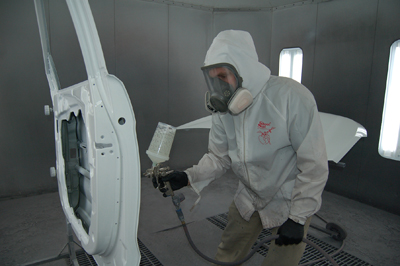A reader recently sent me a question related to refinish materials. This is the second in a series of articles prompted by that question, all related to refinish issues. (Click here to read the first one.)
One of the most common questions I get from shops is something like, “Mike, can you help me, I’m not making money on my paint materials.” As I mentioned in my previous column, I first want to see what their average paint labor hours per repair order are, and then what their paint materials sales are as a percentage of their total revenue.
But I also want to look at their paint material costs as a percentage of sales. In other words, how much do they pay for materials compared to what they collect? I often see their costs are very high. Now there's several reasons why this could be. It could be their painters are having to redo a lot of jobs. There could be other waste. There even could be theft.
But often what I see is a shop classifying costs as paint materials that really aren’t paint materials costs.
To illustrate this, I can pull up a screen from our portal where we track the performance of many shops we consult with. It shows the shop spent $16,379 with their jobber in the month of July. Now some shops might just look at that as their cost of materials, and measure their paint materials sales against that number.
But that’s not accurate because most shops buy far more from their jobber or distributor than just paint materials. In our example, just over half---$8,891---of the $16,379 paid to the jobber was for liquids: primers, sealers, colors, clear. All paint materials.
The shop also bought allied products: sandpaper, tape, masking materials, mixing materials, etc. For this shop, those purchases were more than $2,800 of the $16,379 total. I consider things like gravel or chip guard, tack rags and things of the nature part of a miscellaneous category under paint materials. And all of that is legitimately paint materials costs.
But look at what else this particular shop spent with its jobber in July. About $1,120 of the $16,379 was for stock parts, things that should be itemized and billed out on the estimate. Things like seam sealer, undercoating, cavity wax, weld-through primer, clips and fasteners. Not paint materials costs.
This shop spent about $367 on safety items: paint suits, respirators, dust masks, gloves. Not paint materials costs.
The shop bought body supplies, a $1,476 piece of equipment, $507 worth of shop supplies, and small tools costing $720. Not paint materials.
If this shop was posting all those costs against their paint materials sales, that’s just not an accurate measure of what they are making on paint materials. That jobber bill includes about $5,000 spent on items that should not be classified as paint materials. Of course it would look like the shop wasn’t making any money on paint materials if all those other costs were included.
Some jobbers or distributors will send their customers multiple invoices or statements that help break the total costs down to simplify bookkeeping. But that’s usually four or five sub-invoices at the most, and I think there’s actually a dozen or more different categories. Some shops buy software from their jobber, for example. Others buy aftermarket parts. You can't just take all these things you buy from your jobber and post them to paint materials because it’s not all paint materials.
More on this topic in my next column.















Mike Anderson